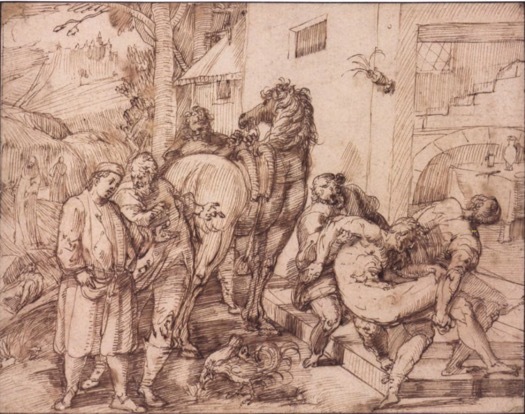Master of the Egmont Albums
The Good Samaritan at the Inn
Late 16th c.
Pen and brown ink, over a sketch in black chalk
27.1 x 34.8 cm
On loan from the Tobey Collection
Here, a Mannerist drawing by a Netherlandish artist reveals German and Italian influences and serves as testament to the way the relatively new technology of printmaking helped spread artistic ideas across Europe. The maker of this work goes by an unusual name: “Master of the Egmont Albums.” Though art historians do not know the artist’s name, they put together a body of works characterized by his distinctive drawing style—which uses curling flourishes to internally model the figures—then designated the maker by an important work from his oeuvre, a group of drawings known as the Egmont Albums. Evidence from his drawings suggests that he was probably from the Low Countries, although he seems to have spent time in Italy. The story shown is the parable of the Good Samaritan at the Inn, where a badly-injured man is passed by several fellow travelers until a Samaritan man cares for him, ultimately paying for his lodging at a local inn. The figure of innkeeper shown in the lower left corner of the drawing is a direct quote from a woodcut by the German Renaissance artist Albrecht Dürer, while the nude figure of the injured man on the right is derived from a lost painting by Michelangelo, which circulated as an engraving. The composition was first carefully executed in black chalk, which allows for revision. Then, the artist traced the chalk lines in brown ink.
Karen Goodchild

